Wedding etiquette: How have customs changed since the 1950s?
- Published
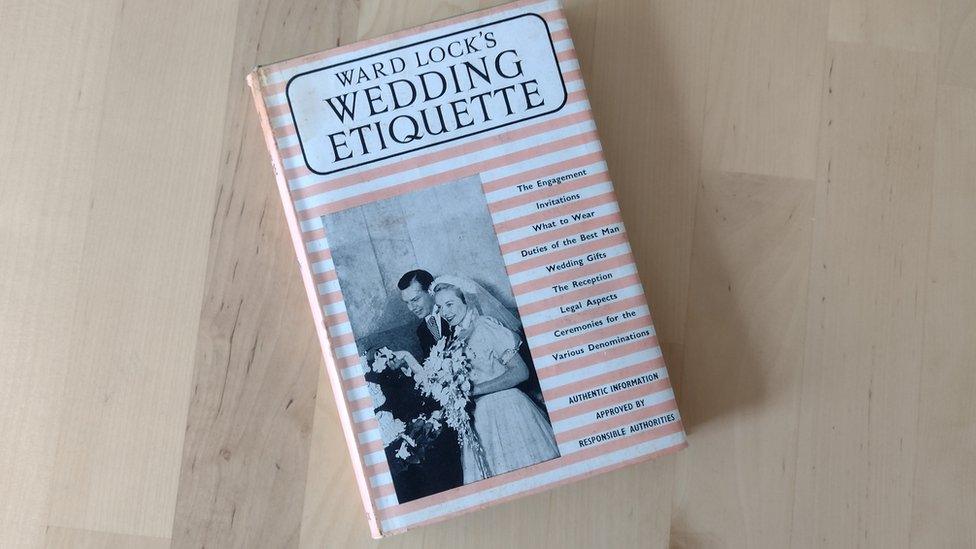
The 1950s etiquette book contains "authentic information approved by responsible authorities"
It's that time of the year when ageing Bentleys and Morris Minors ferry newlyweds to plush wedding receptions.
But how have the fads and fashions for the big day changed in the past 70 years?
Ann Page's Complete Guide to Wedding Etiquette, published in 1950, explained how to have an utterly pukka wedding.
Back in the day, guests could have been sitting down to a delicious meal of pigeon pie, ham and tongue and bananas in jelly.
But how did they pop the question? It's something that's asked of most married couples at some time or other.
Often it involves someone getting down on one knee and making a fool of themselves, but asking your beloved to tie the knot needn't be such a source of embarrassment.
The love letter
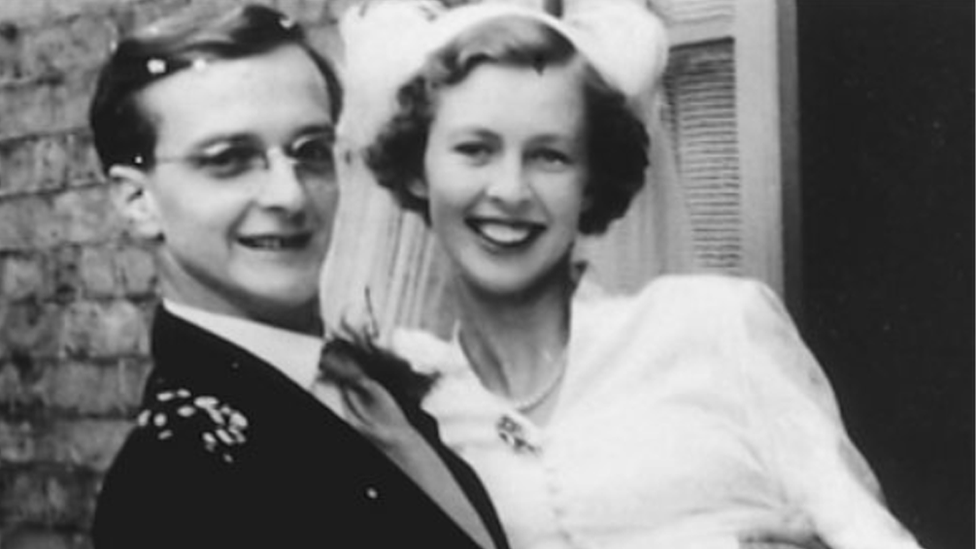
And over the threshold we go... it was very traditional in the last century
Texting a proposal is stretching it a bit, but you could take Ms Page's advice and write your beloved a letter.
And she provided some useful examples.
Back in 1950, young Robert set down his briar pipe for a moment to pen an absolute humdinger to the object of his affections, Rose.
"The truth is I love you, and shall pass a miserable couple of days until you tell me whether you care for me," he wrote.
Once she'd let him stew for a bit, Rose replied in the affirmative.
"I must tell you very frankly that, for a long time now, I have liked you and indeed thought very highly of you and, when it became obvious that you were interested in me, I prayed I might be worthy of you."
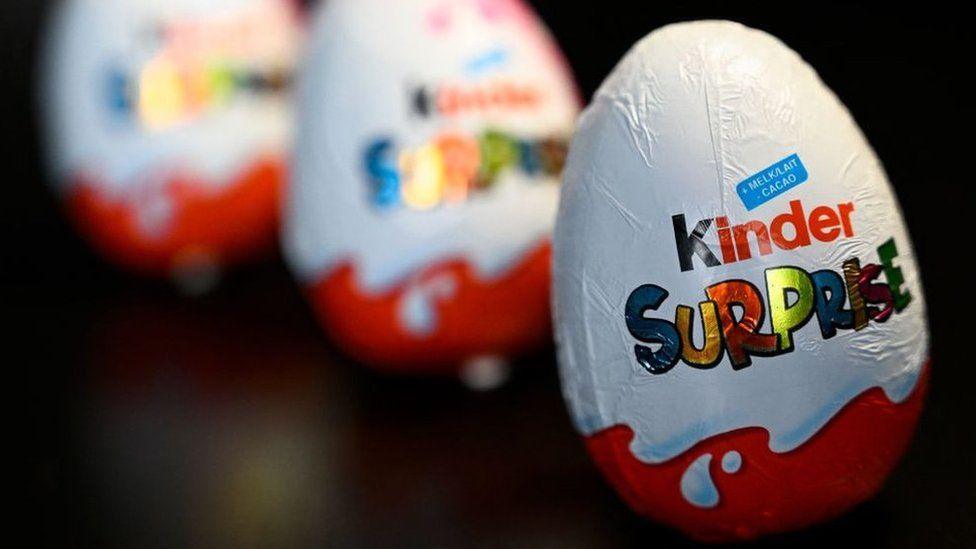
Holly Clements got more of a surprise than she expected when her fiancé Ashley proposed
A Kinder surprise?
Today's couples take a very different approach to the proposal.
Holly Clements's husband, Ashley, certainly didn't go the conventional route when he proposed to her in 2018.
They were staying in a hotel when she noticed he was "acting a bit different".
"He got down on one knee, got out a three-pack of Kinder eggs and gave me one of them," she says.
"I took the foil off and I looked into the toy capsule, there was message saying 'marry me'."
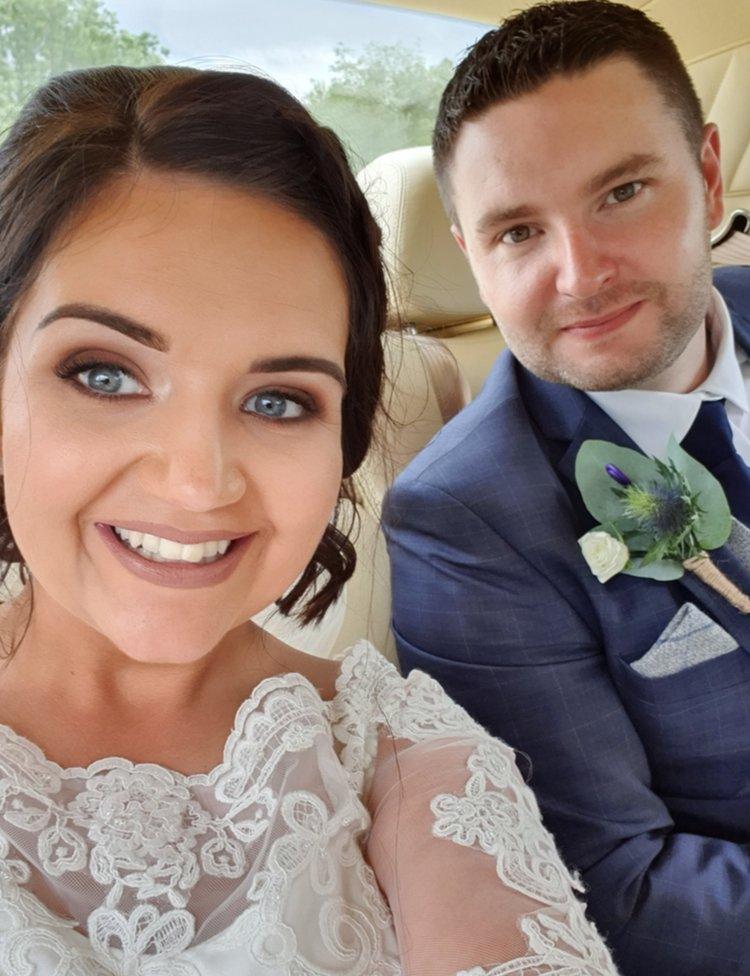
Holly and Ashley were married in County Tyrone
Undoubtedly a romantic at heart, Ashley also recited a poem he'd prepared.
As for the Kinder egg?
"He'd managed to prise it apart and melt it back together."
Their wedding was more conventional, although enlivened by a singing waiter, who certainly didn't crop up in the 1950s guide to etiquette.
The perfect partner
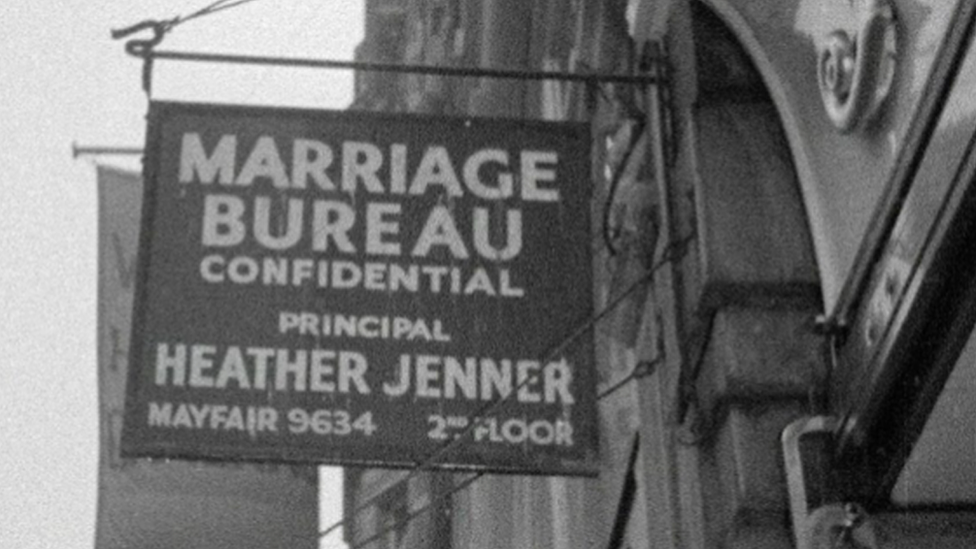
Heather Jenner ran a confidential marriage bureau in Mayfair
But back to the 1950s and, pre-Tinder, how did people go about finding a partner?
A BBC feature from 1959 delved into the work of Heather Jenner, who ran a confidential marriage bureau in Mayfair.
Men are looking for a woman who's "practical and attractive," she said.
"The dumb blonde is out. If she can't boil an egg they think she really ought to be able to learn."
Women were looking for "steady types" - civil servants, farmers and doctors were in high demand.
Sadly, Ms Jenner reported, there was a shortage of men in their 50s and 60s due to the two world wars.
In 1950, brides were also expected to put together a "bottom drawer" of underwear suitable for married life.
Anne Page's list of essential items included a negligee, slip, girdles and a housecoat.
So what has changed?
"If you could see our magazines from 30 years ago, it's just crazy how things have changed," says Dawn Hamilton of Getting Married in Northern Ireland magazine.
She reckons the average cost of a wedding nowadays is £26,000 to £28,000, with a lot of couples paying £2,000 for a dress to be worn once.
Back in the 1950s, the Complete Guide to Wedding Etiquette advised that £30 should be set aside for the reception "including wine, etc".
Some of the present-day additional costs can come from extras that were unheard of the 1950s, such as spectacular fireworks displays.
The tradition of the bride's parents paying for the whole shebang has gone, which must come as a relief to parents with multiple girls in the family.
And Ms Hamilton's final piece of advice: "Don't put every penny you have into the wedding."
The ceremony
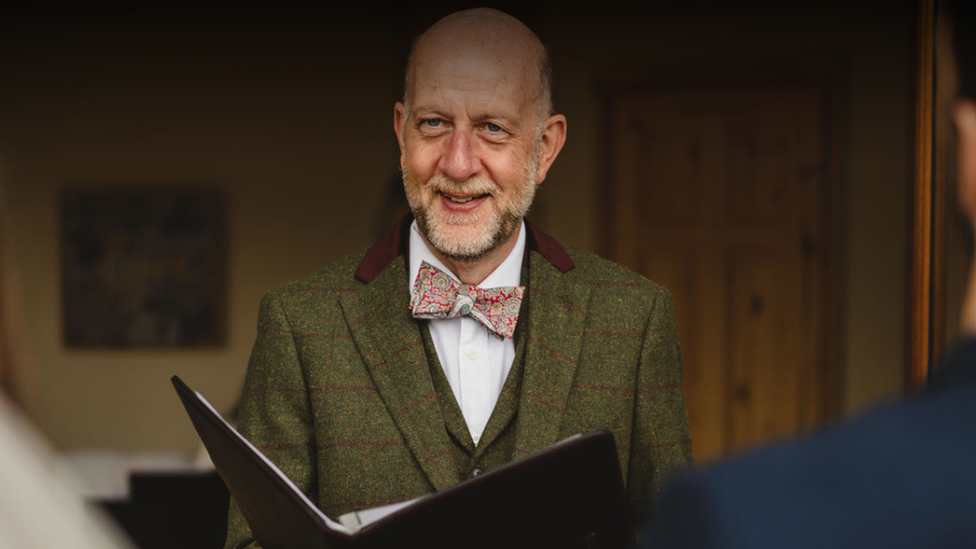
Trevor Molloy became a humanist celebrant after a career in software development
Ann Page's 1950 Guide to Wedding Etiquette is fairly comprehensive when it comes to ceremonies, including Jewish, Quaker and registry offices weddings.
Humanist weddings, however, are a very recent development, being legally recognised in Northern Ireland in 2018.
Trevor Molloy became a humanist celebrant after his retirement from a long career in software development.
He explains that a humanist ceremony allows for a legal, non-religious wedding that can be held at a venue other than a church or registry office.
It's a bespoke wedding where the celebrant writes the text of the ceremony to reflect the wishes of the couple.
"I spend two or three months working with them to see what they want. Apart from the legal aspect, they can do what they want in the ceremony," says Trevor.
Some of the popular aspects are very new, but others go back to the mists of time.
"Ring warming" involves the gathered guests passing the wedding rings among themselves. They're also invited to make a wish for the future of the couple in the few seconds that they hold the rings.
Tying the knot - literally
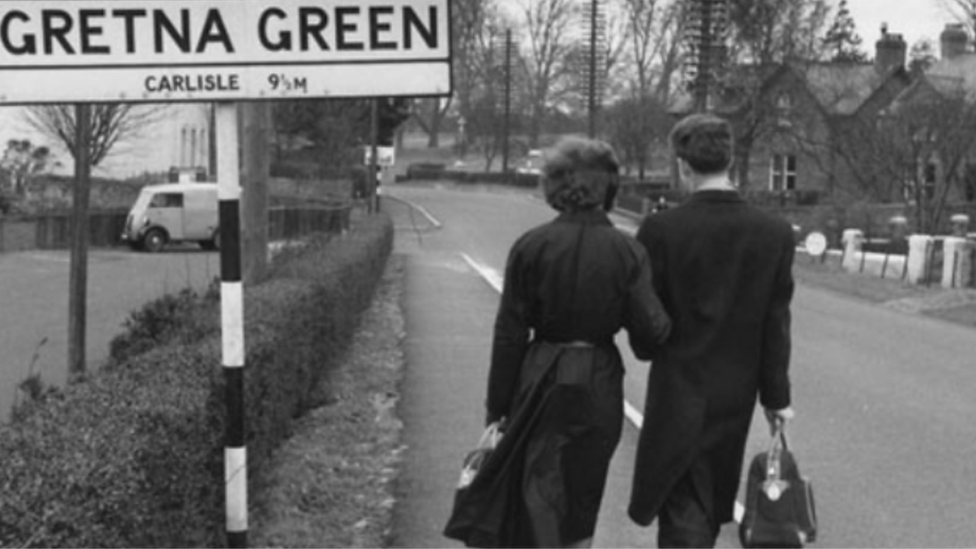
In the 1950s, English couples under the age of 21 often eloped to Scotland to be married
"Handfasting" is a tradition going back to ancient times, where the couple have their hands bound together while making their vows.
"I have one couple who are handfasting their hands with their late grandfathers' ties," says Trevor.
The tradition is also said to be behind the term "tying the knot".
Not all ended happily ever after in the world of the 1950's wedding. In fact, sometimes it never even got started.
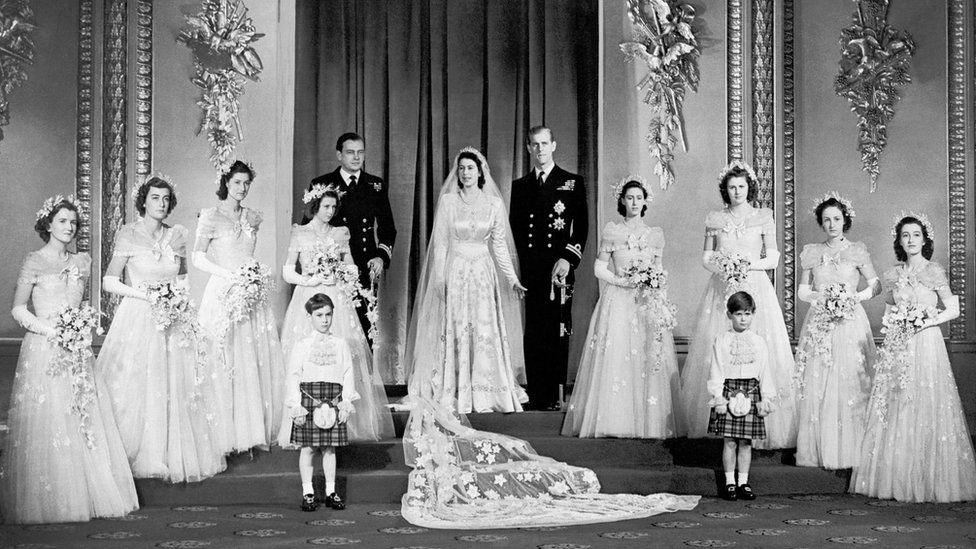
Etiquette Central - the future Queen Elizabeth and Prince Philip set the bar high when they married in 1947
Ann Page advised that in the case of a broken engagement, "the responsibility for breaking off an engagement should be left to the girl".
Her suggested letter to the fiancé is heart breaking.
"You, obviously, do not love me. I have made up your letters and presents into a parcel which will be left at your office tomorrow.
"When you have time, please return my letters. Goodbye,
"Rose."
Related topics
- Published25 April 2022

- Published21 April 2022
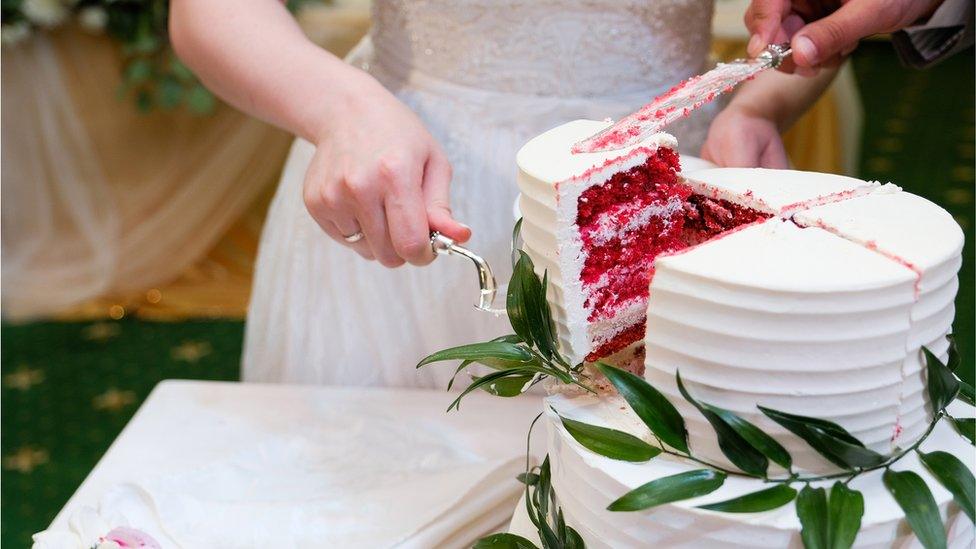
- Published12 April 2012
